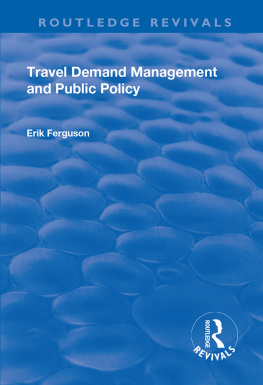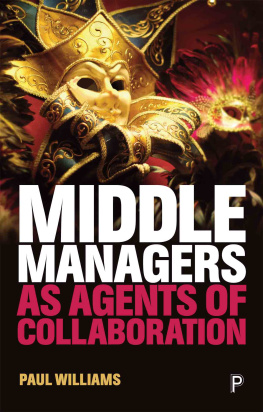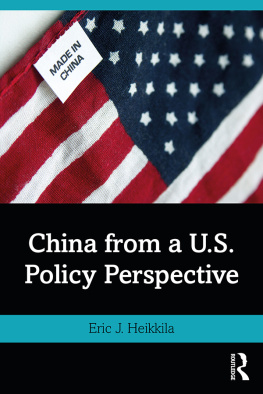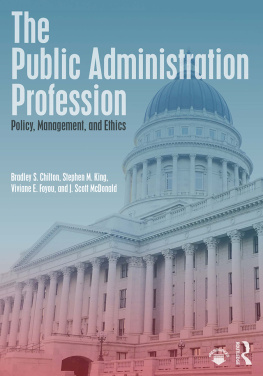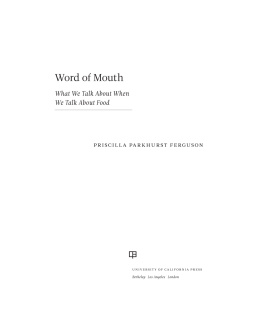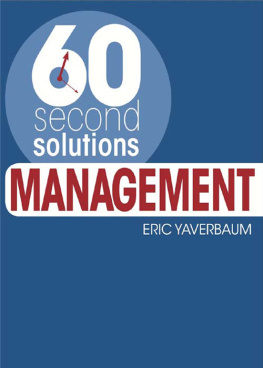Eric Ferguson - Travel Demand Management and Public Policy
Here you can read online Eric Ferguson - Travel Demand Management and Public Policy full text of the book (entire story) in english for free. Download pdf and epub, get meaning, cover and reviews about this ebook. year: 2018, publisher: Routledge, genre: Politics. Description of the work, (preface) as well as reviews are available. Best literature library LitArk.com created for fans of good reading and offers a wide selection of genres:
Romance novel
Science fiction
Adventure
Detective
Science
History
Home and family
Prose
Art
Politics
Computer
Non-fiction
Religion
Business
Children
Humor
Choose a favorite category and find really read worthwhile books. Enjoy immersion in the world of imagination, feel the emotions of the characters or learn something new for yourself, make an fascinating discovery.
- Book:Travel Demand Management and Public Policy
- Author:
- Publisher:Routledge
- Genre:
- Year:2018
- Rating:5 / 5
- Favourites:Add to favourites
- Your mark:
- 100
- 1
- 2
- 3
- 4
- 5
Travel Demand Management and Public Policy: summary, description and annotation
We offer to read an annotation, description, summary or preface (depends on what the author of the book "Travel Demand Management and Public Policy" wrote himself). If you haven't found the necessary information about the book — write in the comments, we will try to find it.
Travel Demand Management and Public Policy — read online for free the complete book (whole text) full work
Below is the text of the book, divided by pages. System saving the place of the last page read, allows you to conveniently read the book "Travel Demand Management and Public Policy" online for free, without having to search again every time where you left off. Put a bookmark, and you can go to the page where you finished reading at any time.
Font size:
Interval:
Bookmark:
Dunwoody
Georgia, USA

average vehicle occupancy | AVO |
centrai business districi | CBD |
Clean Air Act Amendments | CAAA |
Commuter Transportation Services | CTS |
congestion management/air quality | CMAQ |
corporate average fuel economy | CAFE |
Department of Transportation | DOT |
employee commute options | ECO |
employerridesharing program | ERP |
Federal Aviation Administration | FAA |
Federai Highway Administration | FHWA |
Federai Transit Administration | FTA |
high occupancy/toll | HOT |
high occupancy vehicle | HOV |
intelligent transportation system | ITS |
intelligentvehicle/highway system | IVHS |
Intermodal Surface Transportation Efficiency Act | ISTEA |
level of service | LOS |
long range transportation pian | LRTP |
metropolitan planning organization | MPO |
non-motorized transportation | NMT |
not-in-my-backyard | NIMBY |
ridesharing service agency | RSA |
short range transportation pian | SRTP |
single occupant vehicle | SOV |
traffic mitigation ordinance | TMO |
travel demand management | TDM |
transportation control measure | TCM |
Transportation Equity Act for the 21 st Century | TEA-21 |
transportation improvement program | TIP |
transportation management association | TMA |
transportation system management | TSM |
Urban Mass Transportation Administration | UMTA |
Vanpool Services, Inc. | VPSI |
vehicle miles of travel | VMT |
Font size:
Interval:
Bookmark:
Similar books «Travel Demand Management and Public Policy»
Look at similar books to Travel Demand Management and Public Policy. We have selected literature similar in name and meaning in the hope of providing readers with more options to find new, interesting, not yet read works.
Discussion, reviews of the book Travel Demand Management and Public Policy and just readers' own opinions. Leave your comments, write what you think about the work, its meaning or the main characters. Specify what exactly you liked and what you didn't like, and why you think so.

